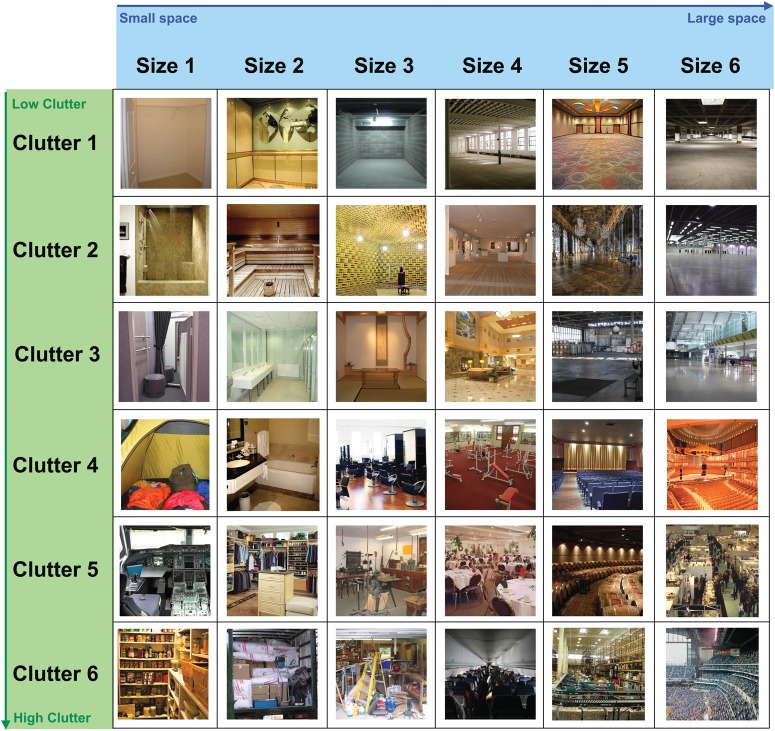Figure 2.
Examples of 36 scene categories varying in 2 orthogonalized properties used in Experiment 2: The size of the scene varied from small to large size on 6-point scale (size levels 1–6 from left to right); the amount of clutter varied from low clutter to high clutter on 6-point scale (clutter levels 1–6 from top to bottom). Scene categories representing each size and clutter level are (organized by size level – clutter level; column–row): 1–1 = closet, 1–2 = shower, 1–3 = fitting room, 1–4 = tent, 1–5 = cockpit, 1–6 = pantry; 2–1 = elevator, 2–2 = sauna, 2–3 = restroom, 2–4 = bathroom, 2–5 = walk-in closet, 2–6 = moving truck; 3–1 = garage, 3–2 = anechoic chamber, 3–3 = Japanese room, 3–4 = hair salon, 3–5 = workshop, 3–6 = messy garage; 4–1 = loft, 4–2 = art gallery, 4–3 = lobby, 4–4 = gym, 4–5 = banquet hall, 4–6 = inside airplane; 5–1 = ball room, 5–2 = palace hall, 5–3 = hangar, 5–4 = movie theater, 5–5 = barrel storage, 5–6 = warehouse; 6–1 = parking garage, 6–2 = industrial warehouse, 6–3 = airport terminal, 6–4 = concert hall, 6–5 = exhibition hall, 6–6 = arena.

